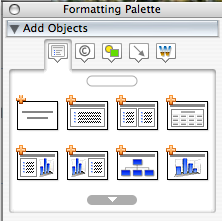PowerPoint: three viewpoints
- PowerPoint is Evil [Tufte, Wired article, Web page ]
- PowerPoint provides the images to your words [Godin, PDF, 800Kb]
- Make PowerPoint a rich media experience [Lane and Wright, Presenters’ University, Web page on Infocomm]

Tufte is arguing that the low resolution of the computer screen and the use of bullet points limit the number of words in a typical short presentation. This limited scope cripples the development of an argument or even the description of a process. Tufte also objects to the ‘sales pitch’ oriented nature of most of the built in slide templates. In a fuller essay, Tufte suggests that PowerPoint may be used to present graphic material which the speaker then explains. He also makes the important point that handouts should not be printed from PowerPoint but should be planned and written as separate documents with fuller text.
Godin’s essay Really Bad PowerPoint (and how to avoid it) is written from the perspective of marketing – exactly the context that Tufte claims has dictated the content of PowerPoint. Godin is also critical of the built-in clip art and slide layouts. Godin defines communication as ‘the transfer of emotion’ and goes on to suggest that the presenter is speaking to the left brain and the right brain is soaking up the images on the slides. The words and the music make the song. Godin is suggesting no more than 6 words per slide, and good quality images used large. He advises against fancy transition effects.
Lane and Wright point to the lack of any hard research on the use of PowerPoint (where is Jakob Nielsen when you need him?) and go on to present some findings of their own based on a literature survey. As there was little available for PowerPoint, they used general principles taken from work about Web sites, e-learning applications and games. To me, this shifts the context of their work from the process of presentation, where there is a speaker addressing an audience with support from slides, to the context of screen based kiosks or learning packages where the viewer is an individual sitting at a computer and is interacting with the various behaviours built into the package.
The summary article makes sensible recommendations about the use of clear navigation and providing users (viewers?) with opportunities to interact with the presentation. Just how a speaker in a room with an audience uses such a branched structure to respond to audience input is not fully discussed. I might try a simple schema diagram about learning theory with linked slides and see where the questionning goes. The Lane and Wright article arrived on my RSS reader from Jane Hart’s e-learning pick of the day.
The NTK™ students will be using PowerPoint and other IT packages to enhance their assessed presentations, and I would like to ‘allow’ or offer the opportunity for the students to adopt a more critical attitude to the package and to find a way of using PowerPoint that makes sense to them. Being critical in your use of PowerPoint might be a bit ambitious if you are a return to learn student who is trying to learn the various forms of academic writing for the first time, and who may not have especially well developed IT skills. This theme will be an ‘enrichment’ for the more confident students.
Garr Reynolds has a useful article with links on the reaction to Tufte’s PowerPoint views, and on Godin’s take on presenting.